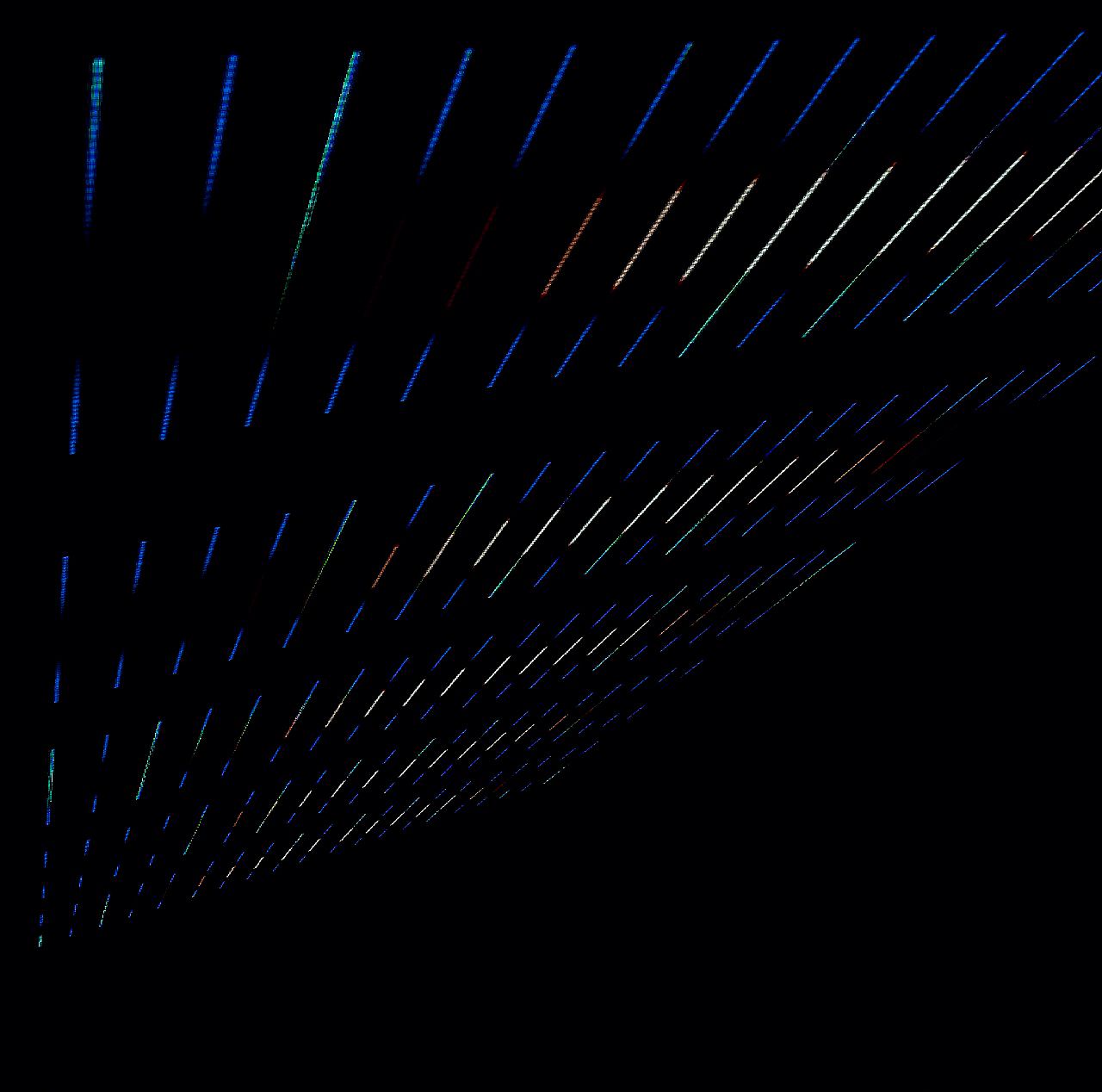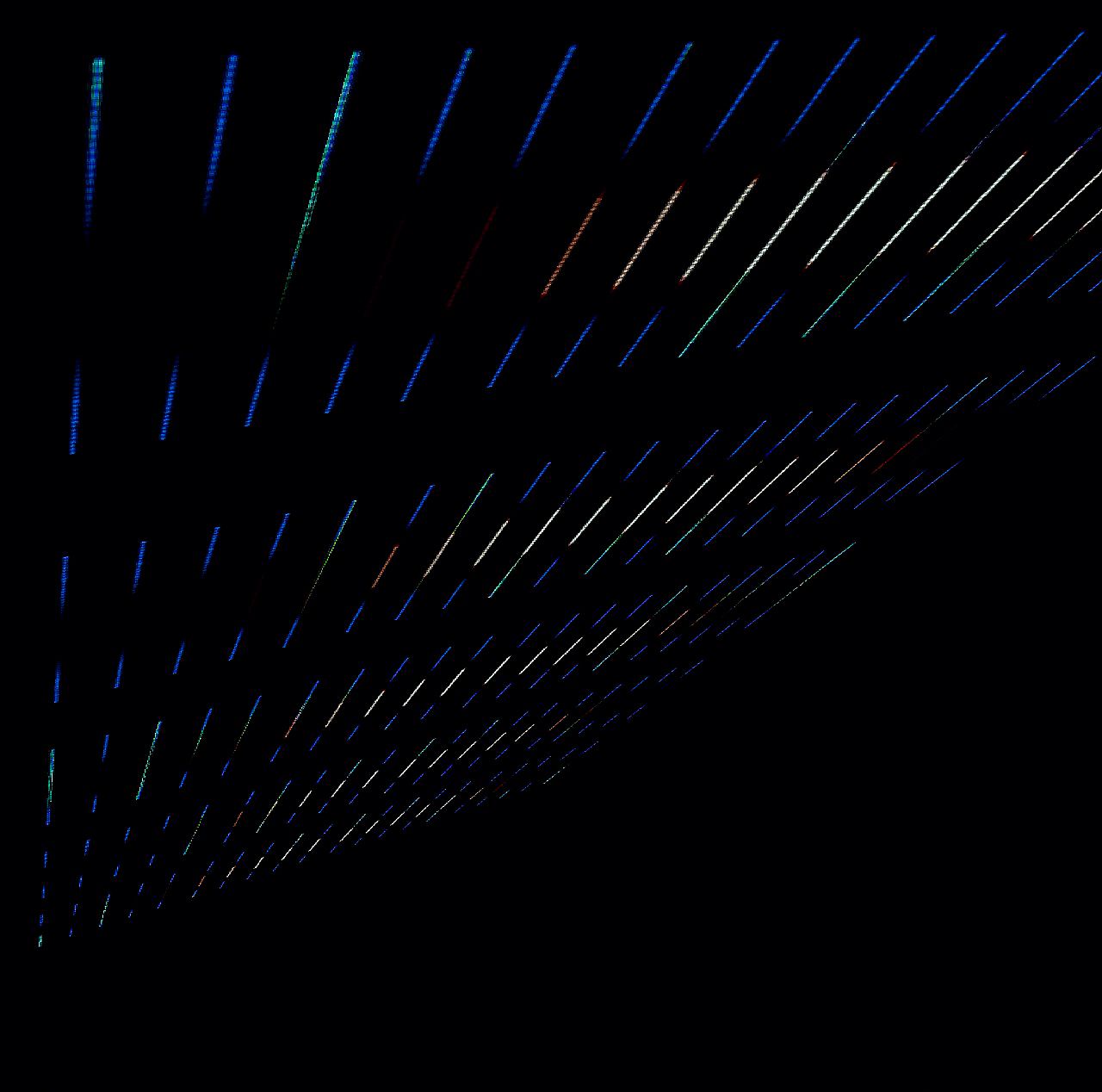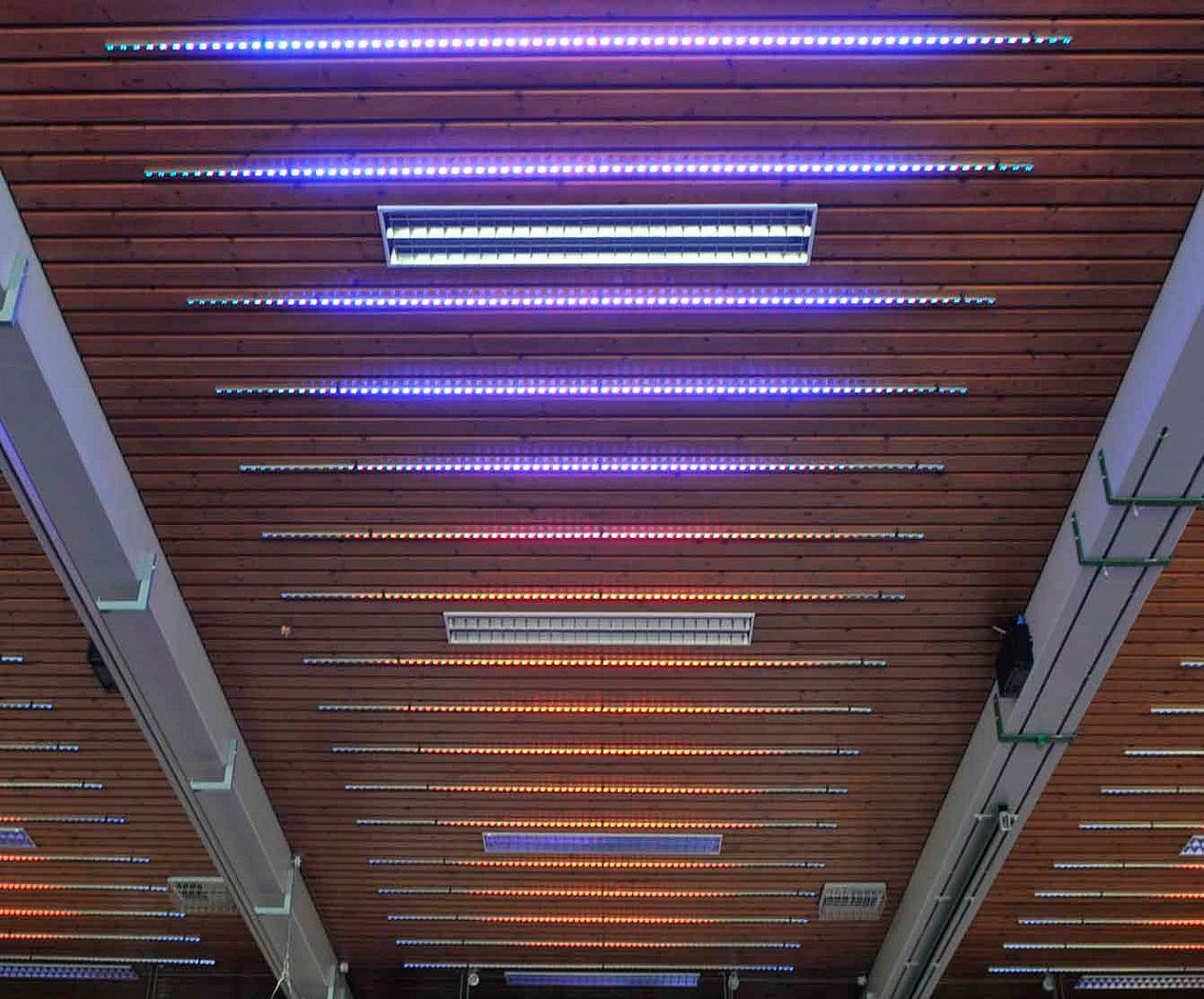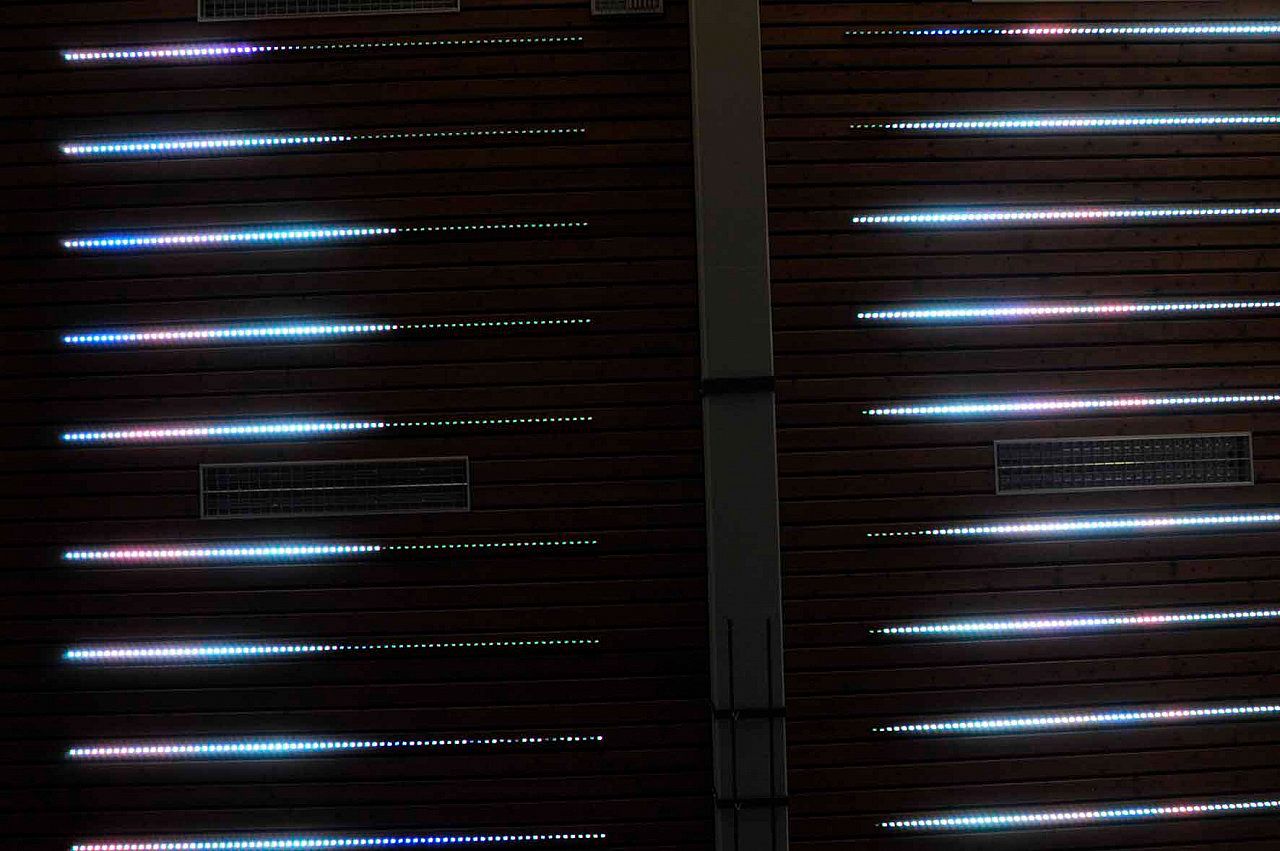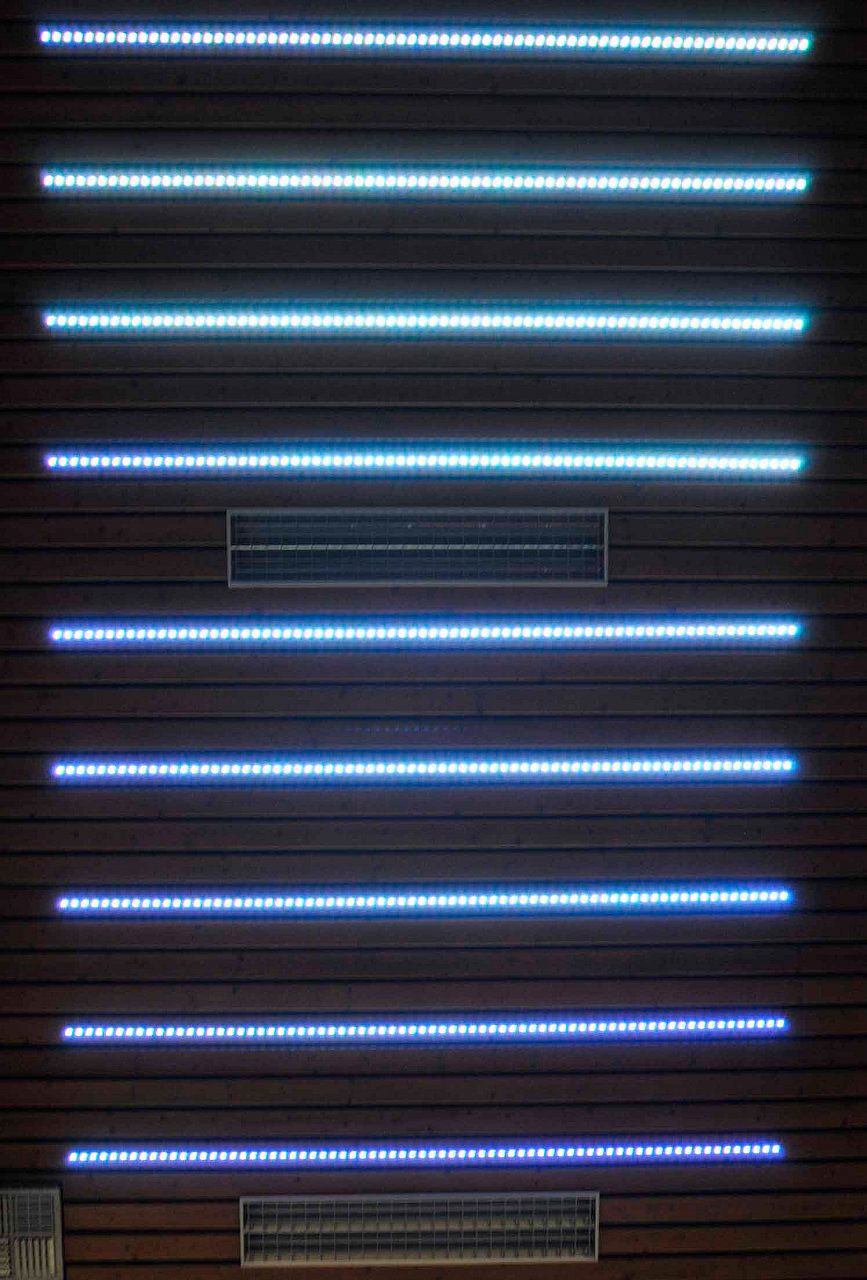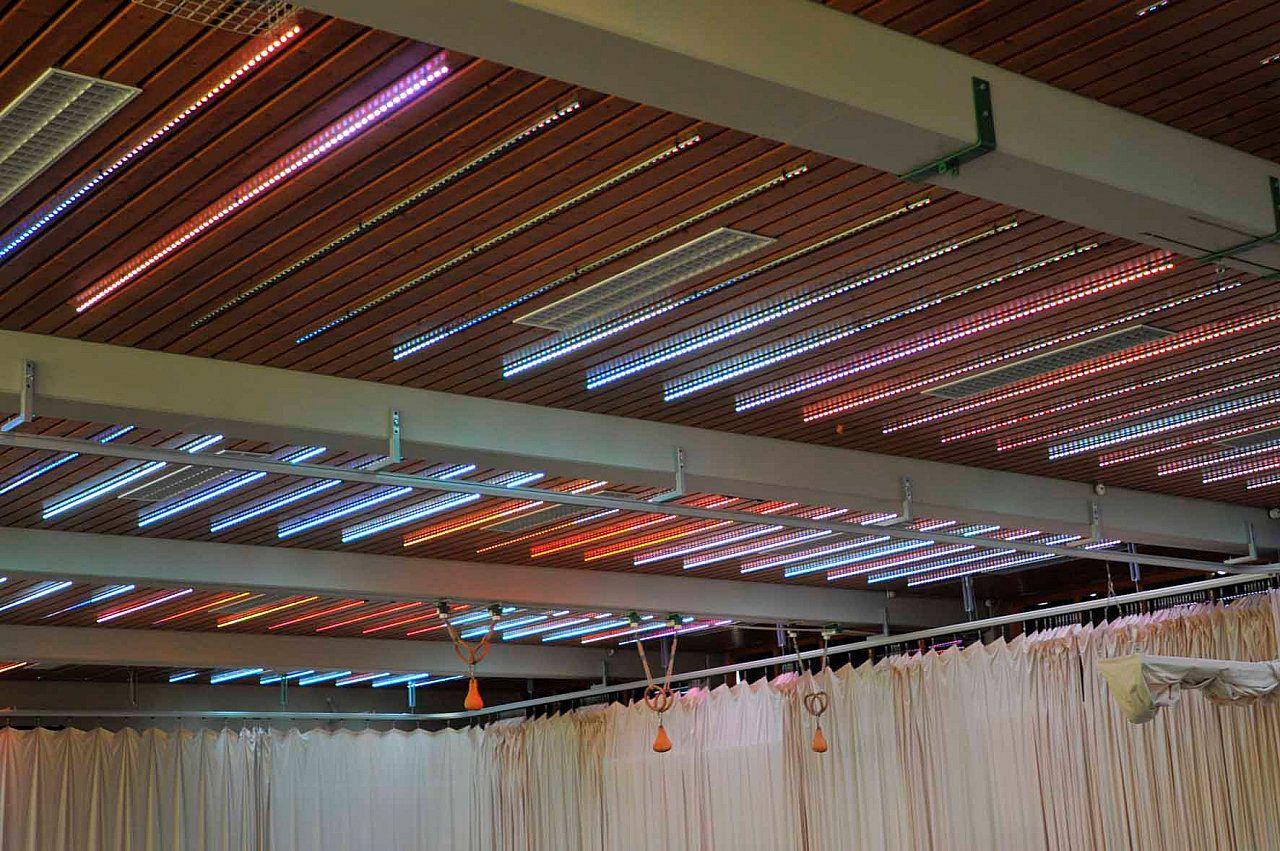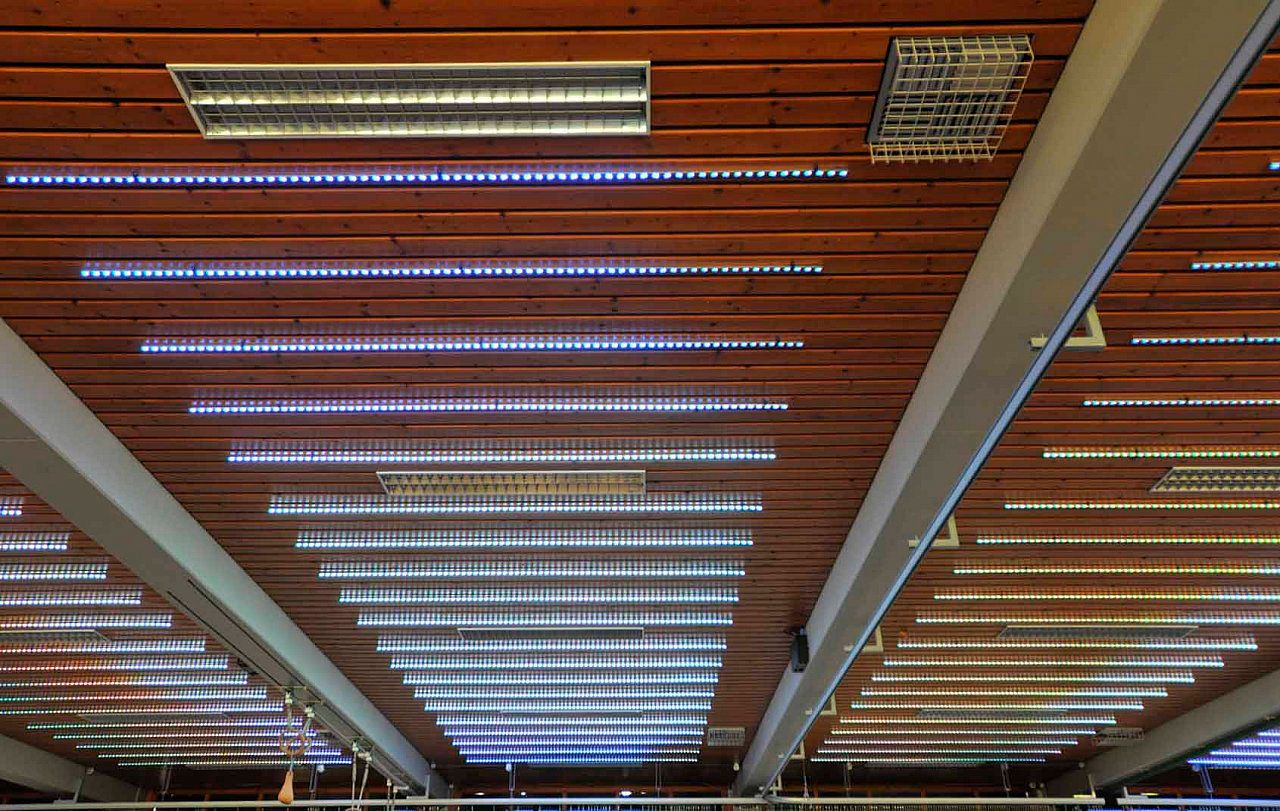Tina Frank
:
Media Lu(N)Z
Back
Information
MEDIA LU(N)Z is an artistic work made for the music festival wellenkl æ nge ’s second stage in the multipurpose hall, which also serves as a gym for the new middle school in Lunz am See . Inspired by the name of the festival and the natural scenery around the town, which is dominated by mountains, forest, and Lake Lunz, the artist chose waves as a theme and pictorial motif of this audiovisual composition. The installation consists of a network of programmable LED strips and a corresponding sound composition that highlights the close connection between electronically generated images and sounds.
Tina Frank chose the view of the lake and the surrounding natural scenery as a backdrop for reflecting on concepts of space, forms of perception in general, and the conditions of perception of audiovisual media in particular. The two ways to read the title – MEDIA LUNZ or MEDIA LUZ – point to a connection between apparatus, natural phenomenon, and site specificity. The artist superimposed the image of the lake stage onto the multipurpose hall through several layers of translation. She transformed the waves and the lake into an abstract composition of strips and dots of light in changing colors and the natural scenery into an audio composition in which sounds reminiscent of nature – croaking, chirping, and buzzing – alternate with more abstract drone sounds. The overlaying of seemingly diametrically opposed sites – the unfiltered natural experience of freely flowing water vs. the discipline-inducing enclosed space of the gym – can only (or especially) succeed on the level of the synesthetic perception of the installation. The physical perception of the sound interplaying with the undulating patterns of color washing over the ceiling lets visitors immerse themselves in the installation, metaphorically speaking. That this immersion does not have to make us passive is also demonstrated by MEDIA LU(N)Z through the flow of the audiovisual composition, which is excellently suited to let us reflect on the spatial conditions, while encouraging us to ask ourselves how we are defined by constructed, cultural, and natural spaces and how these concepts are constantly changing.
(Claudia Slanar)
